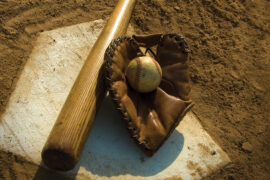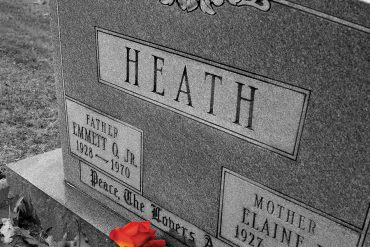Hal Greer is more than an NBA Hall of Famer – he’s also the man who broke the color line in West Virginia.
By Ernie Salvatore
HQ 61 | SPRING 2007
In 1954, Harold Greer, youngest son of the Doulton Avenue Greers, shattered the color line in West Virginia when he accepted a basketball scholarship to what was then Marshall College.
Thus began a quiet but distinguished journey that would end 28 years later with Greer’s induction into the James E. Naismith Hall of Fame in Springfield, Mass. That’s where basketball was born and where he remains Marshall’s sole representative.
The journey wasn’t easy. They seldom are when one is a social trail blazer. Especially if one doesn’t fit the role. Hal certainly didn’t. His wasn’t a commanding presence. More than 50 years later it still isn’t. He’s still the quiet, shy, somewhat distant young man who changed college basketball forever in West Virginia when he enrolled at Marshall College.
“That poor boy,” Mrs. Tula Greer said. “My heart used to go out to him. He’d come home at night too tired and too upset to eat, and he’d tell me he didn’t want to go back ‘over there,’ that he felt like an outsider and that he wished he had gone to Elizabeth City Teachers College like he planned. But I’d say to him, ‘Harold, don’t be foolish. You’ve got to go back tomorrow. If you don’t you’ll be making a big mistake.’ And so, he’d get up in the morning, eat his breakfast, and I’d hurry him along through the door to make sure that he got ‘over there’ on time. That’s how he got his nickname in the papers, ‘Hurryin’ Hal’ Greer.”
Eli Camden Henderson, for his particular time in history, was neither a bigot nor a humanist, but a very practical man. Thus, the Marshall coach made no moral judgments on the U.S. Supreme Court decision that struck down school segregation. Instead, he simply used it to his own advantage. After making several personal scouting expeditions around Huntington to see Hal play, and fortified by private conversations about him with Zelma Davis, Hal’s great high school coach at Douglass, Cam offered the young man a scholarship. Marshall’s gain was to be Elizabeth City (N.C.) State Teachers College’s loss. Hal had wanted to follow in the footsteps there of his athletic brother, the great J.D. Greer.
The news that Marshall had signed its first “negro” caused no great outcry in Huntington. That isn’t to infer that there wasn’t some grumbling. There was, but it was minimal. Replace it instead with a kind of watchful uneasiness that a way of life was about to end.
Naturally, the pressure on the skinny youngster was enormous despite the deliberately casual treatment he’d been given in the newspapers. In deference to Harold and his family they treated his signing by Marshall as just another promising ballplayer, not as Marshall’s or West Virginia’s version of Jackie Robinson in baseball.
Marshall’s first basketball practice that October of 1954 drew an unusually large crowd to the sagging old practice gym. All of the faces in the throng, which ringed the playing floor and the running track overhead, were white except two – Greer’s and Fred Austin’s, a janitor – and all eyes were riveted on Greer. Every time Hal whizzed toward the basket, skinny legs a blur, Henderson would smile and the crowd would buzz. Every time Hal stopped and popped in that little jumper which would become his trademark, Henderson would smile and wink at a sportswriter standing next to him.
“Before that young man is through here,” Cam predicted that October afternoon, “he’ll become one of the greatest players in Marshall history and one of the greatest in the country.”
Ironically, Hal never played for Cam. Legend or not, Cam would be gone as Marshall’s coach by season’s end and the honor of coaching Greer would go to Jule Rivlin, Cam’s greatest pupil, his first consensus All-American and the man who would be responsible for Greer’s being drafted into the National Basketball Association by the Syracuse Nationals – today’s Philadelphia 76ers.
Greer played three splendid seasons for Rivlin at Marshall. He finished with 1,377 points and a 19.4 scoring average in only 71 games – far short of today’s elongated schedules. The first and last games would be the most memorable of his MU career. The former was against Spring Hill of Alabama when Hal scored 20 points in his debut. The latter, against Miami of Ohio, resulted in a smashing 90-79 victory. It was a perfect send-off for Hal. When he trotted off the court for the last time in a Marshall livery he fell into Riv’s arms. They locked in an emotional embrace as cameras clicked and the capacity crowd in Memorial Field House rose to give the player an incredible 10-minute ovation.
“That was one of the few times I remember Hal showing his emotions,” said Jack Freeman, his hometown teammate. “He usually kept his feelings to himself. I guess he figured he had to. Still, he was well-liked on the campus. Lots of people went out of their way to be nice to him. But as far as I know, he didn’t date anyone. And he wasn’t close to anyone. Besides, he was too concerned with fulfilling his life’s ambition which was to play professional basketball.
“Hal kept to himself on our road trips too. After the games most of us would go out. Coach Rivlin didn’t keep a close check on us. But Hal wouldn’t go. He probably didn’t want to get into any embarrassing situations. Like the one in Charleston when we were there to play Morris Harvey. We went into a restaurant where we had reservations for our pre-game meal. The next thing we knew we were back on the street and Coach Rivlin looked upset. We didn’t realize what was going on, although Hal did. Later we learned the restaurant wouldn’t serve Negroes. They weren’t called blacks or African- Americans then.”
Hal saved his finest all-around season for 1957-58, his last. He scored 567 points in 24 games for a 23.6 scoring average. Both were personal highs and placed him 17th in the nation. Hal was also the nation’s fifth best sharpshooter with a stunning 54.6 field goal percentage. His free-throw shooting was ranked No. 14 in the nation at an 83.3 percentage. These were the credentials that earned Hal consensus All-American honors behind such illustrious first team picks as Jerry West, Oscar Robertson and Wilt Chamberlain.
“I called Paul Seymour, the Syracuse coach, and told him to draft Hal as soon as he could,” Rivlin recalled.
Hal’s first NBA game was on October 19, 1958. From there he played 15 fabulous seasons in the league, all with the same franchise, and thus earned his ticket to enshrinement at Springfield.
He still ranks in the Top 20 on the NBA’s all-time scoring list, with 21,586 points. He was the sixth man in league history to score more than 20,000 points. He wears the 1967 NBA championship ring on his finger and in 1968 he was voted the most valuable player in the All-Star Game. And, let’s not forget, he has a street named after him in Huntington.
“I enjoyed my Marshall years,” Hal said years ago. “I never had any problems there. The worst thing was an incident in Charleston. We were checking into a hotel to take an afternoon nap and the clerk wouldn’t let me register. Coach Rivlin told the guy that if he didn’t let me register he’d call the governor, he’d call the newspapers, he’d tell everyone. Then he said to me, ‘Greer! Go upstairs!’ I did. I had a good nap too!”





